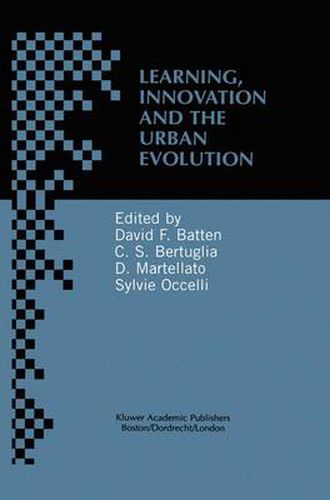Readings Newsletter
Become a Readings Member to make your shopping experience even easier.
Sign in or sign up for free!
You’re not far away from qualifying for FREE standard shipping within Australia
You’ve qualified for FREE standard shipping within Australia
The cart is loading…






This title is printed to order. This book may have been self-published. If so, we cannot guarantee the quality of the content. In the main most books will have gone through the editing process however some may not. We therefore suggest that you be aware of this before ordering this book. If in doubt check either the author or publisher’s details as we are unable to accept any returns unless they are faulty. Please contact us if you have any questions.
In the global information society, innovation is a highly pervasive process that influences all facets of human life: cultural, economic, political, and institutional. A desire to comprehend the impacts of innovative change on so many areas of urban life prompted the research project that has resulted in the publication of this volume. Our research confirms that we are presently in the midst of an era of rapid and explosive change. The primary engine driving this latest transformation of the post-industrial society is generally thought to be technological. But such an explanation is too narrow. Broadly speaking, the age in which we find ourselves could be more aptly described as a global, knowledge-intensive age. Many of today’s knowledge-intensive activities, like research and development (R&D) programs, are being conducted with relative ease on a multinational scale. As well as science having an increasing impact on processes of innovation, R&D activities also have become more complex. This more sophisticated era of global knowledge exchange is facilitated by major advances in our infrastructure networks. In this highly interactive world, many innovations are by-products of collective exchanges between cities far apart, simplified by the ease of transport and communication. Thus, there is a need for us to look more closely at various collective sequences of learning, knowledge exchange and innovation in a spatial setting. This is the primary purpose of this book.
$9.00 standard shipping within Australia
FREE standard shipping within Australia for orders over $100.00
Express & International shipping calculated at checkout
This title is printed to order. This book may have been self-published. If so, we cannot guarantee the quality of the content. In the main most books will have gone through the editing process however some may not. We therefore suggest that you be aware of this before ordering this book. If in doubt check either the author or publisher’s details as we are unable to accept any returns unless they are faulty. Please contact us if you have any questions.
In the global information society, innovation is a highly pervasive process that influences all facets of human life: cultural, economic, political, and institutional. A desire to comprehend the impacts of innovative change on so many areas of urban life prompted the research project that has resulted in the publication of this volume. Our research confirms that we are presently in the midst of an era of rapid and explosive change. The primary engine driving this latest transformation of the post-industrial society is generally thought to be technological. But such an explanation is too narrow. Broadly speaking, the age in which we find ourselves could be more aptly described as a global, knowledge-intensive age. Many of today’s knowledge-intensive activities, like research and development (R&D) programs, are being conducted with relative ease on a multinational scale. As well as science having an increasing impact on processes of innovation, R&D activities also have become more complex. This more sophisticated era of global knowledge exchange is facilitated by major advances in our infrastructure networks. In this highly interactive world, many innovations are by-products of collective exchanges between cities far apart, simplified by the ease of transport and communication. Thus, there is a need for us to look more closely at various collective sequences of learning, knowledge exchange and innovation in a spatial setting. This is the primary purpose of this book.